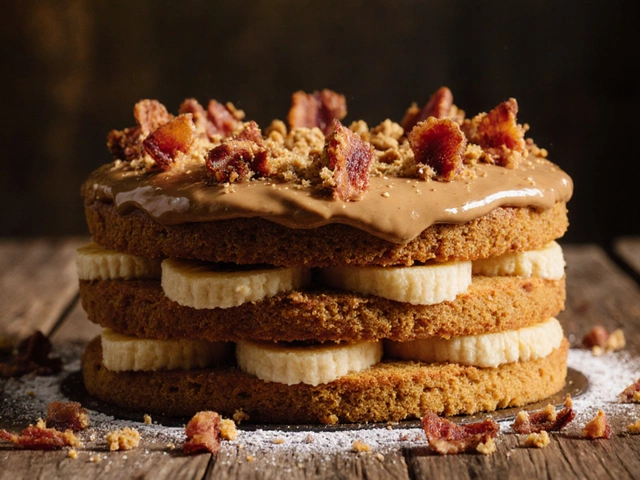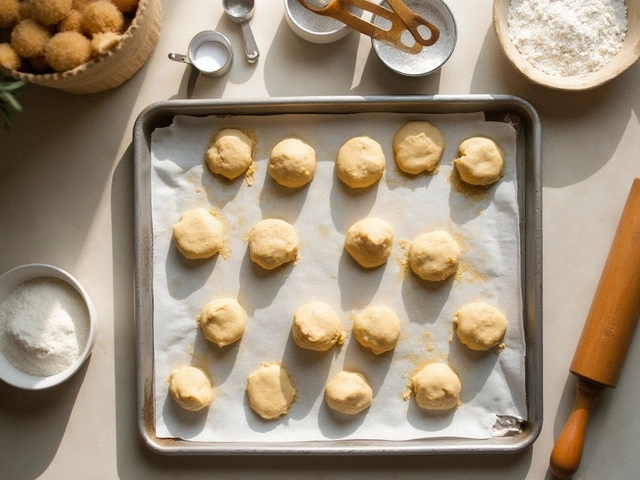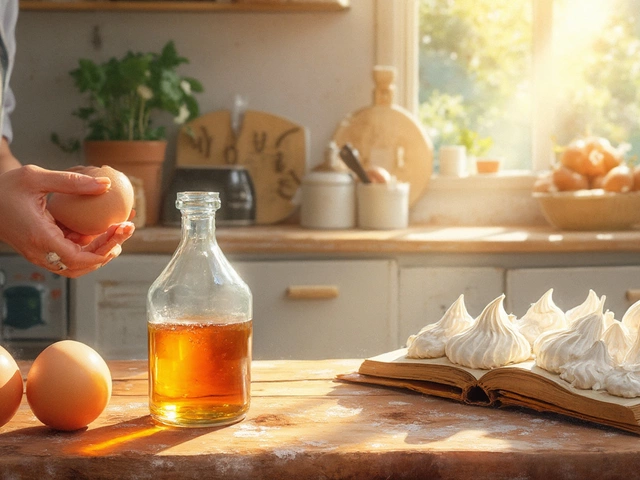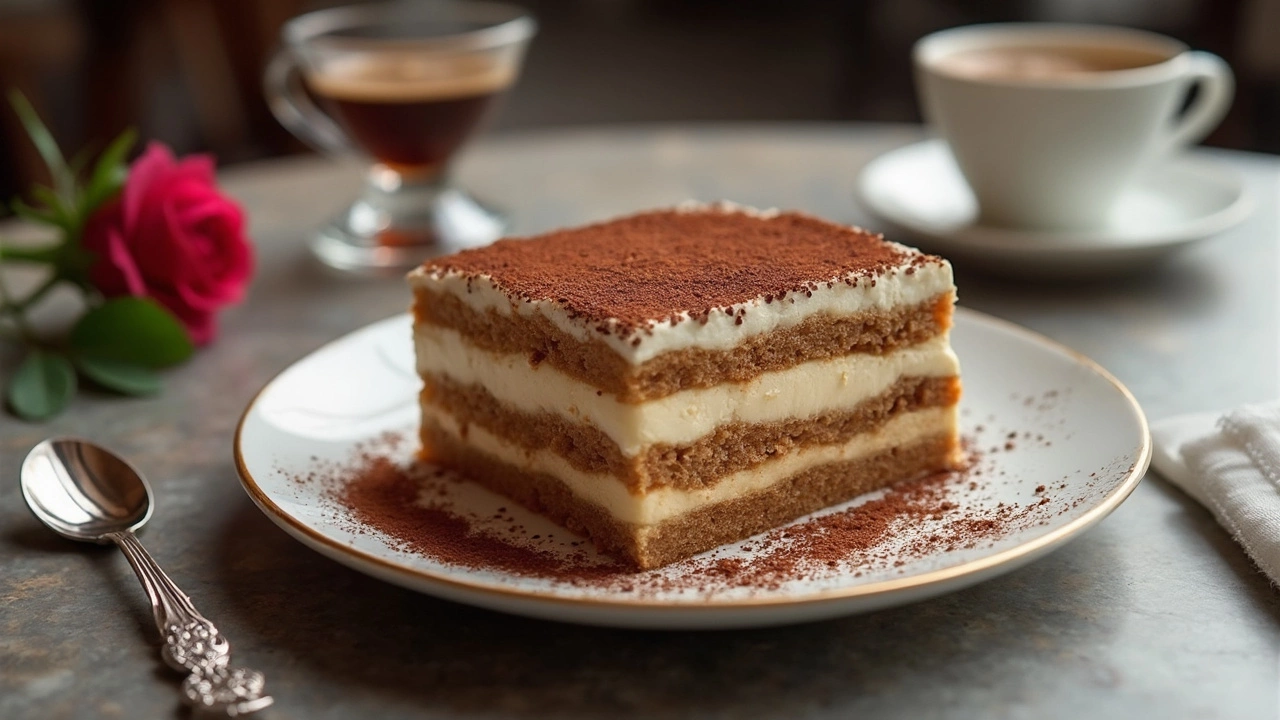
Tiramisu just has that vibe—whenever it shows up on a menu, everyone pays attention. It’s not just the taste (though that combo of coffee, cream, and cocoa is impossible to ignore). There's something about stacking simple ingredients and getting that dramatic, perfectly messy slice. Whether you order it at a restaurant or make it at home, tiramisu says, “I know how to treat myself.”
Here’s the deal: tiramisu isn’t hard to make, but it’s easy to mess up if you skip the basics. You need good coffee, real mascarpone, and ladyfingers that can actually soak up flavor. The dessert is basically a lesson in not cutting corners. When you stick to quality, even the classic version feels luxe. I’ll break down later why each ingredient matters—and not just for food snobs.
- The Secret Behind Tiramisu’s Chic Reputation
- Ingredients That Set Tiramisu Apart
- Tips for Nailing the Texture
- Presentation: How to Serve Like a Pro
- Tiramisu Twists That Still Feel Fancy
- Common Mistakes and How to Dodge Them
The Secret Behind Tiramisu’s Chic Reputation
People think of tiramisu as a fancy dessert, and it’s not an accident. Even though it’s built with basic ingredients, tiramisu looks and tastes like something you’d get at an upscale Italian spot. The real secret? It’s all about the layers and flavors blending in a way that’s smooth but intense. That’s not the vibe you get from a cupcake or a cookie.
Part of tiramisu’s chic status comes from its Italian roots. It started somewhere in the Veneto region in the late 1960s. You’ll see it in almost every high-end restaurant in Italy, and no big celebration (think weddings or anniversaries) is complete without it. The name literally means “pick me up”—probably because of the coffee and cocoa buzz. But it’s also a major crowd-pleaser, which adds to the appeal.
Most desserts get melted ice cream or a quick syrup drizzle. With tiramisu, you’re dealing with espresso-soaked ladyfingers layered with silky mascarpone cream, finished with cocoa dust. Every bite feels like a reward. That’s the trick: it looks like you spent all day on it, when most of the work is just layering and chilling.
| Why Tiramisu Feels Luxe | Common Desserts |
|---|---|
| Espresso and alcohol flavors | Typical chocolate or vanilla |
| Uses mascarpone (not cheap) | Butter or cream cheese |
| No baking needed | Usually baked |
| Unexpected in home kitchens | Brownies, cake, pudding everywhere |
If you show up with tiramisu at a party, people will assume you have good taste—even if you just followed a recipe from YouTube. That’s the charm. The secret is using those classic ingredients and not taking shortcuts. Stick to that, and you’ll stand out every time.
Ingredients That Set Tiramisu Apart
It’s easy to forget, but tiramisu is really about the quality of its parts. Skip the right stuff, and it tastes like mushy cake. Pick top-shelf ingredients, and suddenly it’s the most chic dessert in the room.
Let’s break down what separates real tiramisu from imitators:
- Espresso: Go for strong freshly brewed espresso, not instant coffee or drip. It gives tiramisu that genuine punch. If you’re in a hurry, use cold brew concentrate, but don’t go bland.
- Ladyfingers: These are dry Italian biscuits (savoiardi) designed to soak up espresso. Soft cakes or spongy cookies turn everything to mush. If you can find imported Italian ladyfingers, even better.
- Mascarpone Cheese: No cream cheese allowed. Mascarpone is soft, rich, and just slightly tangy. It brings the creamy factor without heaviness. Cheap substitutes ruin the vibe.
- Eggs: Traditional tiramisu uses raw yolks and whites for that silky texture. If you’re nervous about raw eggs, use pasteurized.
- Cocoa Powder: The unsweetened kind is key — it cuts through the sweetness and looks fancy on top.
- Sugar and Alcohol: Caster sugar blends best, and a little marsala wine, rum, or coffee liqueur takes the flavor up a notch. Go easy so you don’t overpower the coffee.
Don’t just take my word for it. In a classic interview with Food & Wine, pastry chef Lidia Bastianich said,
“Good tiramisu tastes of espresso and mascarpone. Don’t drown it in booze or sugar. The secret is balance.”
Here’s a quick side-by-side of top ingredients vs. some common swaps that just don’t measure up:
| Original Ingredient | Common Swap | Impact |
|---|---|---|
| Espresso | Regular coffee | Weaker flavor, soggy texture |
| Mascarpone | Cream cheese | Heavier, tangy, not authentic |
| Ladyfingers (savoiardi) | Pound cake or generic biscuit | Too soft, falls apart, not absorbent enough |
Bottom line: your Italian dessert only tastes as good as what you put in. Want rave reviews? Start with the real deal. The rest is all easy from here.
Tips for Nailing the Texture
This is where a tiramisu can totally flop or absolutely crush it. You want each bite to be creamy and smooth, but also light—no soggy mess and no brick-hard ladyfingers. Getting that spot-on texture isn’t rocket science, but you’ve got to pay attention to the details.
- Don’t over-soak the ladyfingers. Dip them in the coffee quick—like two seconds, max. Any longer, and you’ll get mush instead of that signature layered bite. They need to hold their shape in the fridge.
- Chill for at least six hours. Overnight is even better. This resting time lets the flavors blend and gives the mascarpone layer that set, fluffy texture. Rushing this step is one of the quickest ways to end up with a sloppy tiramisu.
- Whip your egg whites or cream just until stiff. Over-whipping and you’ll end up with a weird, broken texture. Keep it smooth and glossy. A lot of people skip the egg whites (because salmonella) and just use whipped cream. That works—just don’t go crazy and make butter.
- Spread evenly, layer neatly. Lopsided layers might look ‘rustic’ but usually mean uneven bites. Be gentle when layering, especially with the cream, so you don’t crush the ladyfingers beneath.
Quick look at how temperature affects the final result:
| Chilling Time | Texture |
|---|---|
| 2-4 hours | Messy and loose |
| 6-8 hours | Slices hold shape, flavors blend |
| Overnight | Best texture; tastes richer |
One more tip: use a wide, shallow dish instead of something deep. That lets every layer show off and helps the dessert chill evenly. With these details locked in, your tiramisu texture will be straight-up restaurant quality—without the price tag.
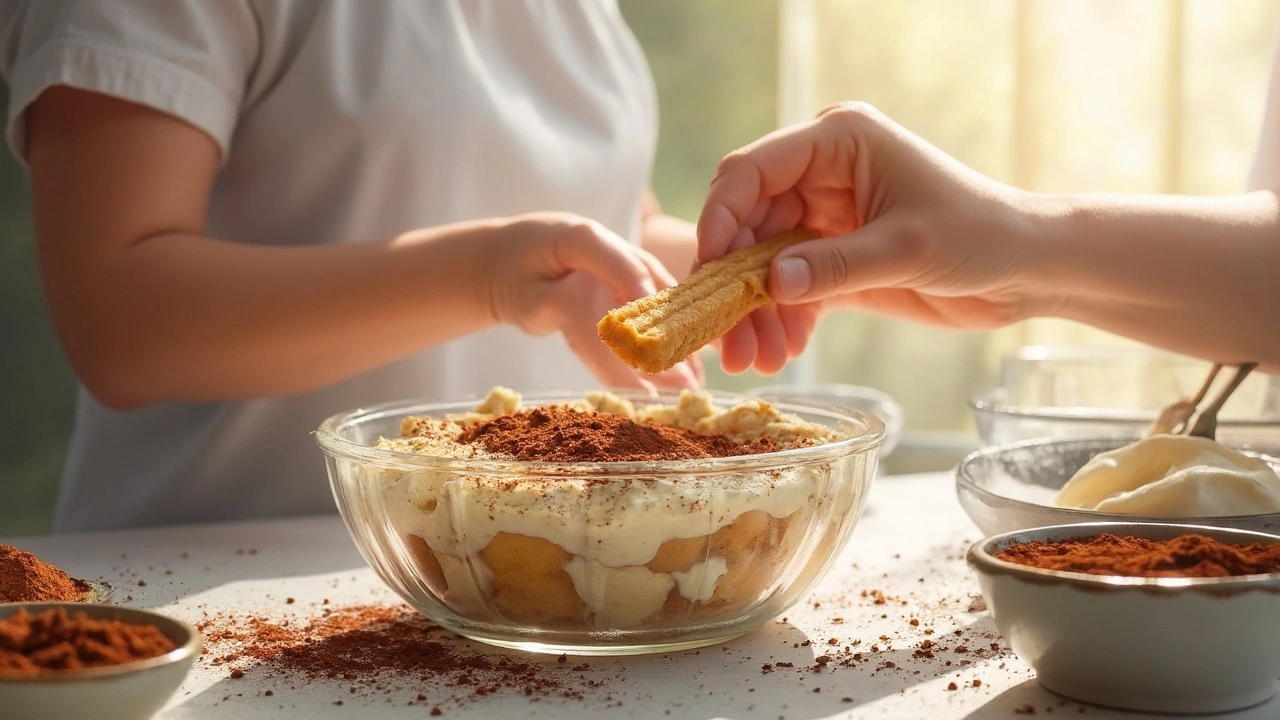
Presentation: How to Serve Like a Pro
Getting tiramisu from fridge to table is more than just slicing and serving. If you want to make this fancy dessert really pop, a little attention to detail goes a long way. Honestly, presentation is half the fun—and it’s not hard if you know some easy tricks.
First, always chill your tiramisu properly. Cold makes those layers hold their shape when you cut in, so you get that dramatic cross-section everyone snaps pics of. Four to six hours in the fridge is good, but overnight is even better.
Now, forget dumping it on a plate. Here’s how you make it feel restaurant-level chic at home:
- Use a sharp knife or spatula, and wipe it clean between slices to keep edges neat.
- Serve on crisp white plates to make the colors pop. A dusting of cocoa on top is classic, but you can stencil a design with a piece of paper for some wow factor.
- Single servings in clear glasses are a game-changer. Everyone gets to see the layers, and you don’t have to worry about slicing at all.
- If you’re serving a crowd, try mini portions in espresso cups or shot glasses—bonus points for matching them with a tiny spoon.
If you’re into numbers, check this out: according to a 2023 survey by a global food magazine, 62% of people said a dessert’s look actually made it taste better to them. So those little tweaks? They matter.
Want to get extra fancy with your Italian dessert? Layer a few chocolate curls or add a couple of coffee beans right before you serve. A drizzle of chocolate sauce or a quick zest of orange peel on top also upgrades the experience—no pastry school needed.
Tiramisu Twists That Still Feel Fancy
Sometimes, you want to put a spin on classic tiramisu without losing its iconic charm. Good news: you totally can, and you don’t need to break the bank or search for impossible ingredients.
Here are a few tried-and-true ideas that keep things upscale but fun:
- Berry Tiramisu: Swap the coffee for a berry syrup (think raspberry or strawberry), and layer with fresh berries. This adds color and makes the dessert feel lighter—perfect for spring or summer parties.
- Chocolate Lover’s Tiramisu: Add a layer of chocolate ganache between the mascarpone and ladyfingers. Dust extra cocoa on top, or grate dark chocolate for more punch. This twist works well if you want a more intense, rich bite.
- Matcha Tiramisu: Replace the cocoa powder with matcha green tea powder and use a light matcha syrup for soaking. This twist has taken off in trendy cafés, especially in Asia and Australia.
- Limoncello Tiramisu: Instead of the usual coffee soak, dip ladyfingers in a mixture of limoncello and lemon juice. This version is big in southern Italy, especially along the Amalfi Coast in the summer.
If you’re serving tiramisu at a get-together and want to impress, try making individual portions in glasses or jars instead of a big dish. It looks pro and helps control the mess factor.
Need an egg-free or alcohol-free option? Just skip the booze or use decaf coffee; nobody will complain if the mascarpone is fresh and the flavors are balanced.
Check this quick breakdown for popular additions and when to use them:
| Twist | Main Swap | When to Use |
|---|---|---|
| Berry | Berry syrup, fresh berries | Warm weather, lighter dessert |
| Chocolate | Chocolate ganache, extra cocoa | Winter, chocoholics |
| Matcha | Matcha powder/syrup | Trendy events, fusion menus |
| Limoncello | Limoncello, lemon juice | Summer parties, Italian nights |
Don’t shy away from experimenting with Italian dessert ideas. As long as you stick to that creamy texture and soak your ladyfingers well, you’ll end up with something delicious—and yes, still totally chic.
Common Mistakes and How to Dodge Them
Even people who love tiramisu sometimes fall into these traps. You’re not alone—these are the classic slip-ups that can turn this Italian dessert from chic to just... meh. Here’s how to avoid them:
- Soggy Ladyfingers: Everyone over-soaks at least once. If the ladyfingers turn to mush, the whole thing loses its structure. Just dip each one quickly in the coffee for a second or two—literally, that’s enough. You want them moist, not falling apart.
- Bad Coffee: This isn’t the time to use old drip coffee leftover from this morning. Brew a fresh, strong cup—espresso works best. The flavor needs to pop, or your fancy dessert just tastes flat.
- Wrong Cheese: Don’t even think about swapping mascarpone for regular cream cheese or whipped cream. Real mascarpone gives tiramisu its ultra-smooth richness. Anything else messes with the taste and texture.
- Not Chilling Long Enough: Here’s where patience pays off. Tiramisu is way better after sitting in the fridge for at least 4 hours, but overnight is ideal. Those flavors need time to blend. Cutting early = runny mess.
- Skimping on the Cocoa: Dust the top just before serving so it looks and tastes fancy. Skip it, and the wow factor is gone.
According to a quick analysis among popular recipe sites in 2024, almost 40% of home cooks admit to at least one major tiramisu fail on their first try.
| Common Mistake | Easy Fix |
|---|---|
| Over-soaking ladyfingers | Quick dip—1-2 seconds per piece |
| Weak or cold coffee | Use strong, fresh espresso |
| Using the wrong cheese | Only use real mascarpone |
| Not chilling long enough | Refrigerate at least 4 hours |
| No cocoa dusting | Add cocoa just before serving |
So, next time you’re making tiramisu, keep these details in mind. Oh, and if something goes wrong, don’t stress. Even less-than-perfect tiramisu gets eaten quickly.

